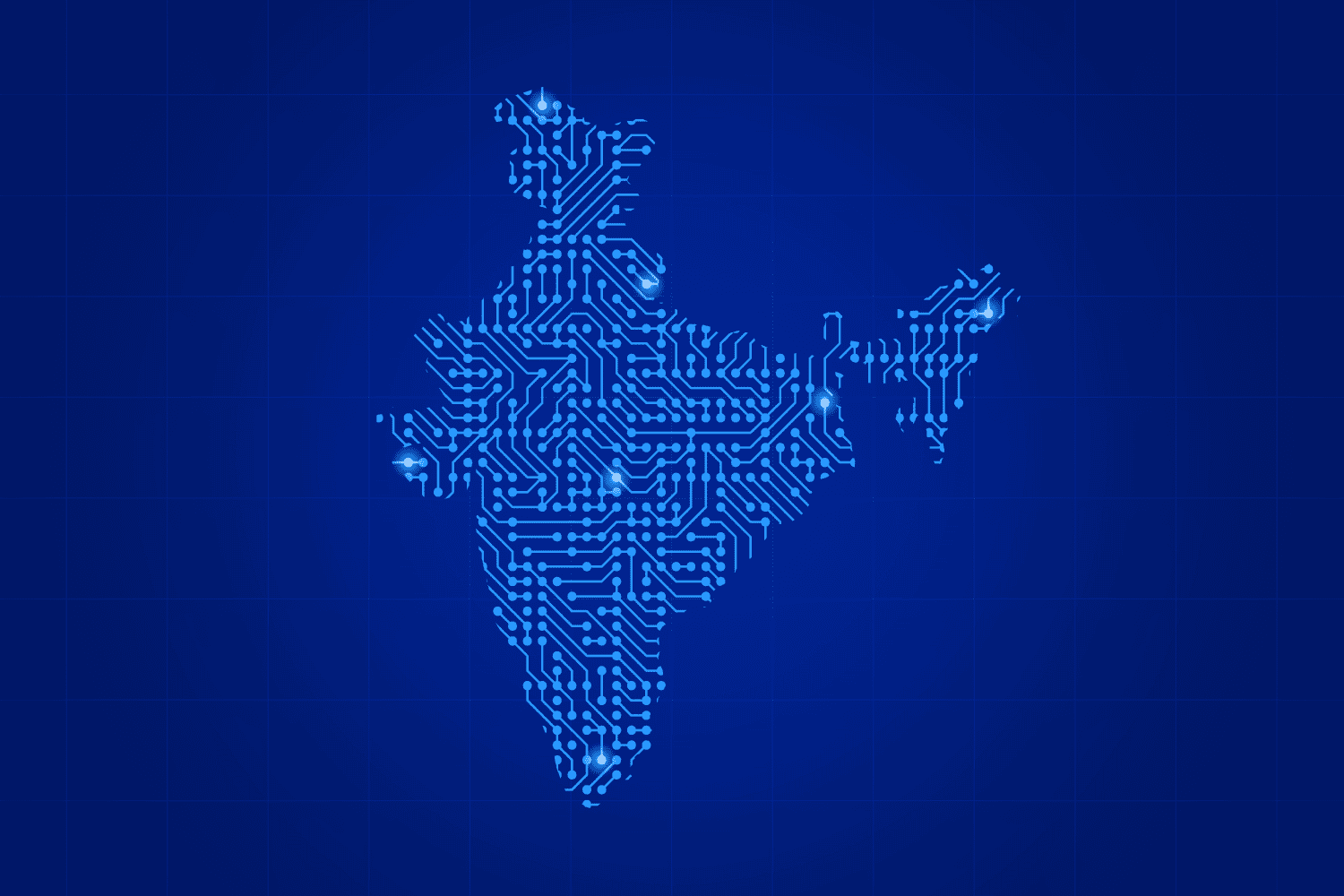Who is the global leader of the technology market? According to the Australian Strategic Policy Institute, it’s China due to the fact that the country has “established a sometimes stunning lead in high-impact research across the majority of critical and emerging technology domains.” The study revealed that China led 37 of 44 technology sectors tracked in a year-long project by the think tank.
However, recent diplomatic mishaps have set the stage for waning trust in China. And as an increasing number of countries shy away from relying on the communist country’s technology supply, new partnerships are forming to overcome this industry monopoly. Consequently, India has emerged as a potential successor to China’s tech reign, having recently created initiatives with the US and UK to “unlock the future potential of technology,” and deliver high-skilled jobs and economic growth.

Over the last 90 days, we’ve seen an 8.19% increase in Information Technology documents mentioning “India” and “China.”
But what are the driving forces behind India’s ascension? Does it have the resources and manpower to overtake China’s lead? Below, we answer these pressing questions and unveil what TMT leaders can expect in coming quarters.
India’s Mammoth Workforce
There’s no denying that India is a major player in the global IT and BPO services industry. Between 2021 and 2022, the country generated $157 billion in revenue with $106 billion coming from IT services alone. Experts project revenue for India’s IT Services market to reach $22.41bn by the end of 2023 and experience an annual growth rate (CAGR 2023-2028) of 13.97%, resulting in a market volume of $43.09 billion by 2028.
So what’s driving rapid financial growth and positioning India as a leader within the sector?
Experts are attributing India’s population. The IT industry is a significant employer, directly providing jobs for approximately 5.1 million people and indirectly contributing to the creation of over 12 million jobs. In fact, the country’s population has swelled so rapidly in recent years that India is expected to surpass China as the world’s most populous country in 2023—reaching a population of 1.429 billion people this year. This is the first time a country has surpassed China’s population count since the United Nations began recording population rankings in 1950.
While China is considered by most to be the leader of the tech industry, the question of a potential successor is partially answered by a country’s workforce size. And when coupled with foreign policy and relationships (i.e., Biden’s recent banning of investments in Chinese tech), it becomes evident that China’s footing is not so secure.
Further, a shift towards offering more complex and expertise-based IT services will eventually become the norm and put India in a position to experience accelerated growth. India’s IT workforce is developing intricate problem-solving skills and managing end-to-end digital operations for multinational corporations, marking a transition from being primarily a technology support center to a versatile hybrid workforce that fuels the digital operations of some of the world’s largest companies.
Investing in Digital Literacy and Startup Culture
India’s legislative commitment to investing in national technology development has undeniably played a pivotal role in propelling the country forward as a global technology leader. For example, the Digital India program aims to create a digital infrastructure that will enable every citizen to access government services and information online.
Additionally, the government has launched several schemes to promote digital literacy, such as the Pradhan Mantri Gramin Digital Saksharta Abhiyan (PMGDISHA), which aims to make one person in every rural household digitally literate—an essential skill needed to thrive in an increasingly interconnected world.
By fostering a robust digital infrastructure, these programs not only enhance accessibility but also promote transparency and efficiency in governance. Furthermore, recognizing that digital literacy is the cornerstone of the digital revolution, these government programs serve as a prime example to other countries of how a nation can harness the power of technology to empower its citizens and foster inclusive growth.
Another major contributor to India’s IT growth is the meteoric rise of startups. Some of the world’s most successful startups, including household names like Flipkart, Paytm, and Ola, have emerged from the crucible of innovation within India. These companies have not only disrupted traditional industries but have also pioneered entirely new markets, reshaping the economic landscape in the process.
What makes India’s startup ecosystem particularly remarkable is its ability to nurture and encourage innovation. This has been made possible, in part, by the government’s proactive approach. The Startup India program, for instance, has emerged as a cornerstone of this support system.
Through this initiative, the government provides crucial resources such as funding, mentorship, and a conducive regulatory environment to fuel the growth of startups. In doing so, it has fostered an environment where entrepreneurialism flourishes and provides opportunity for home-grown talent.
Partnership with the US
While the US is taking action against supporting China’s technology industry by establishing national resources, India is following suit to become a self-dependent nation.
Legislation carried out by the New Delhi government, such as banning Chinese apps including TikTok in 2020, indicates a desire to reduce dependency on foreign technology. By restricting Chinese app usage within the country, India is not only cutting off Chinese corporations from one of its largest consumer bases, but is also protecting its citizens from potential data seizures, reducing the influence of Chinese tech companies in its digital landscape, and fortifying national security. This aligns with a broader global trend of countries reevaluating their relationship with Chinese technology companies, especially in sectors like telecommunications and infrastructure.
Contrarily, there’s been recent, positive collaboration between the United States and India as exemplified by the Critical and Emerging Technologies initiative (iCET). In May 2022, President Biden and Prime Minister Modi announced plans “to elevate and expand our strategic technology partnership and defense industrial cooperation between the governments, businesses, and academic institutions of our two countries.” The White House’s fact sheet about the initiative highlighted a commitment to fostering an open, accessible, and secure technology ecosystem, based on mutual trust and confidence, that will reinforce democratic values and institutions.
India’s intentions to strengthen its ties with the US and its technology sector will prove to be mutually beneficial in the development of new forms of artificial intelligence, cybersecurity, and advanced manufacturing—all while fostering innovation and economic growth in both countries. And while it increases access to technology and markets for both nations, this diplomatic partnership will also serve as a counterbalance to China’s influence globally.
Keeping Tabs on the Tech, Media, and Telecom Industry
Understanding the impacts of global trends, like India’s booming tech market, is crucial to a company operating within this space. Utilizing an AI-based tool, like AlphaSense, to sift through the noise and pinpoint business-impacting insights has never been as important as it is today. Download our guide, Proving ROI of Market Intelligence for Technology Companies, to learn the ways leading tech companies are solving the five primary challenges of traditional market intelligence.
The AlphaSense platform delivers unmatched AI search capabilities and features for analyzing qualitative and quantitative research in a matter of seconds, and can mine unstructured data for the most critical insights. Leverage information from over 10,000 trusted business sources to take the lead in your industry.




